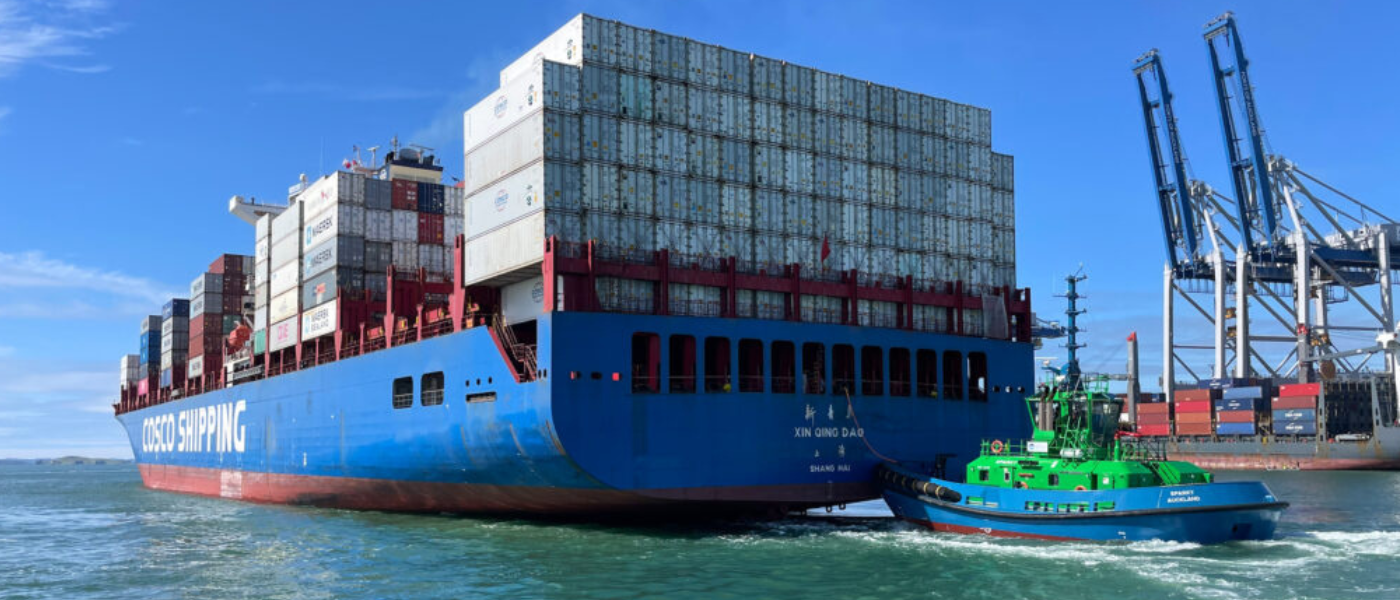Sparky Electric Tug Shoreside Charging Infrastructure
Ports of Auckland partnered with Damen – Netherlands, a renowned shipbuilding company, to introduce Sparky, an electric tugboat, into their fleet. Sparky's outstanding features include a 6-meter draft, 24.73-meter length, two azimuth thrusters with 3-meter diameter propellers, and a 70-tonne bollard pull – matching the strength of the port's strongest diesel tug. With 80 battery racks housing a total of 2,240 batteries, delivering 2,784kWh of power, Sparky is anticipated to save approximately 465 tonnes of CO2 in diesel emissions annually. To ensure successful implementation, an efficient and compliant shoreside charging infrastructure was a critical consideration.
Challenge
The primary challenge was to develop a shoreside charging infrastructure that complied with New Zealand regulations and accommodated Sparky’s unique specifications. This included providing a reliable and efficient charging system to support Sparky’s operations, while reducing CO2 emissions and promoting sustainable marine transportation.
Solution
McKay, an experienced electrical engineering and contracting company, was engaged to address the shoreside charging infrastructure challenge for Sparky. McKay’s team, comprising engineers and electricians, worked closely with Damen and Ports of Auckland to develop a comprehensive solution that fulfilled the project requirements. The scope of work encompassed various aspects of electrical design and installation, ensuring compliance, safety, and practicality.
To overcome the challenge, McKay focused on the following:
- Electrical Componentry Approval: McKay facilitated the approval process for the electrical switchboard componentry, guaranteeing compliance with New Zealand rules and regulations.
- Certified LV Earthing Design: Ensuring the safety and reliability of the charge station, McKay designed and implemented a certified LV earthing system that met the necessary standards and regulations.
- Integration Design for Fault/Breakdown Situations: McKay’s experts designed an integration system between the Damen Switchboard and LV circuit isolation to address any potential faults or breakdowns in the insulation on the 690V side. This design enabled quick isolation and response, minimizing disruptions in the charging process.
- LV Power and Lighting Switchboard Design: McKay developed a comprehensive design for the LV power and lighting switchboard in the charging substation. This design aimed to provide a reliable and efficient power supply and lighting system for the charging infrastructure.
- Complete Electrical Installation: McKay’s team successfully executed the complete electrical installation on-site, ensuring the proper termination of the charging crane. This involved working closely with the ship’s engineer to establish a secure physical connection between the charging system and Sparky.
Outcome
The collaboration between McKay, Damen, and Ports of Auckland resulted in a successful implementation of the shoreside charging infrastructure and electrical installation for Sparky, the E-tug. The exemplary efforts and expertise of the McKay team ensured compliance, safety, and efficiency throughout the project. Sparky’s introduction as an electric tugboat revolutionized the maritime industry by significantly reducing CO2 emissions and promoting sustainable practices.
The outcome of the project can be summarized as follows:
- Environmental Impact: Sparky’s electric propulsion system, powered by 2,240 batteries with a total capacity of 2,784kWh, is estimated to save approximately 465 tonnes of CO2 in diesel emissions annually. This substantial reduction in carbon emissions contributes to a cleaner and greener maritime environment.
- Operational Efficiency: The shoreside charging infrastructure facilitated efficient and reliable charging for Sparky. With its 1.5MW charging capacity at 1050VDC, the E-tug can perform up to four shipping moves on a single charge, enhancing its operational capabilities and productivity.
- Compliance and Safety: McKay’s meticulous design, approved electrical componentry, certified LV earthing system, and integration design for fault/breakdown situations ensured that the shoreside charging infrastructure complied with all relevant New Zealand regulations. Additionally, the system incorporated continuous temperature monitoring and glycol cooling for optimal charging conditions.
By successfully addressing the challenge and providing a reliable and compliant charging infrastructure, McKay contributed to the overall success of the project, elevating Sparky’s reputation and promoting the adoption of electric-powered vessels in maritime transportation.

